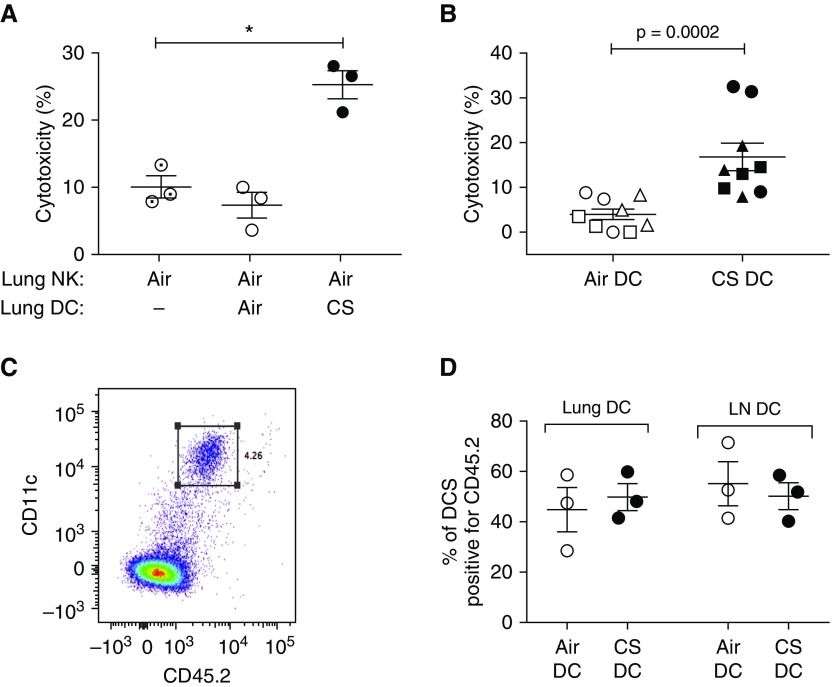Figure 4.
Dendritic cells (DCs) from cigarette smoke (CS)–exposed mice prime natural killer cells (NKs) to become cytotoxic, both in vitro and in vivo. C57BL/6 mice were exposed either to air or CS for 8 weeks. Lung tissue was collected and dispersed for isolation of NKs (CD49b+), CD326+ epithelial cells, and pan-DCs. (A) Lung NKs from air-exposed mice were preincubated for 18 hours alone or with DCs from air- or CS-exposed mice, and then pooled lung epithelial cells from CS-exposed mice were added for an additional 4 hours. Cytotoxicity was then assayed. Data are from three separate experiments (each with five mice per group); a repeated measures one-way ANOVA with Tukey’s multiple comparison test was used to determine significance. (B) DCs from either air- or CS-exposed mice (CD45.2 congenic strain) were adoptively transferred (200,000 cells intranasal) into naive recipient mice (CD45.1 congenic strain). Recipient mice were killed 48 hours later and lungs were collected to isolate NKs and epithelial cells. Pooled epithelial cells from all mice were cultured either alone or with NKs from individual mice. After 4 hours, cells were collected and cytotoxicity was assayed. Data represent means ± SEM of three mice per group in each of three separate experiments, indicated by symbols. The Mann-Whitney t test was used to determine significance. (C) Representative flow staining of lung tissue from recipient mouse that received adoptive transfer of DCs. Cells that are double-positive for CD45.2 and CD11c are indicated by the square gate. (D) Lung tissue and mediastinal lymph nodes (LNs) were collected from recipient mice that received adoptive transfer of either air-exposed DCs or CS-exposed DCs. Antibodies against CD11c, MHC class II, CD11b, and CD103 were used to identify all lung and LN DCs. CD45.2 staining was used to determine the percentage of DCs that were positive for CD45.2, indicating they had been adoptively transferred from donor mice. There were no significant differences between groups, as determined by the Mann-Whitney t test. *P < 0.05.

